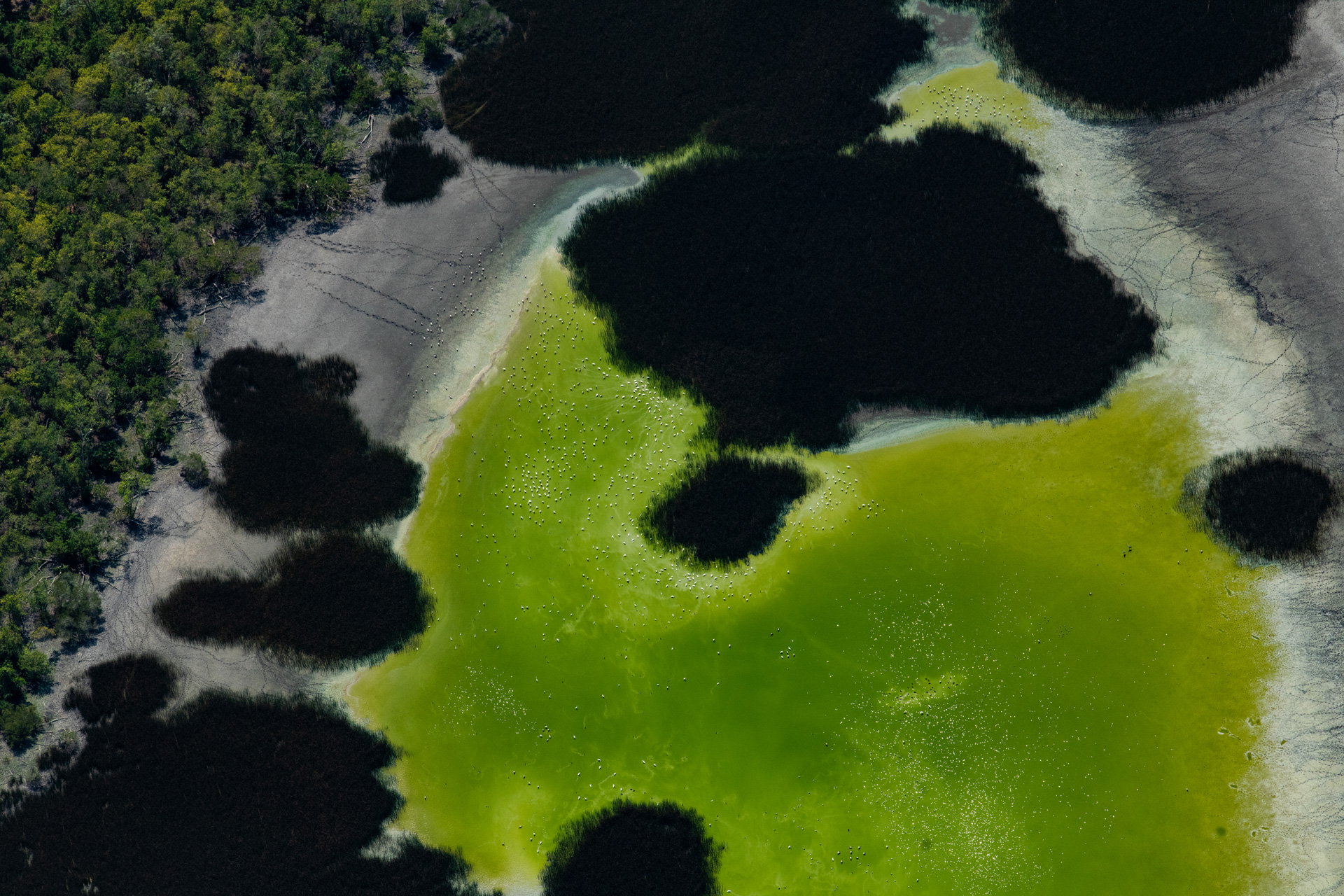|
|
Phosphorous (water)Phosphorous is an essential nutrient for plants and animals but is naturally only found in small amounts in the environment and is one of the limiting factors in plant growth. It plays a major role in cell development and is a component of DNA, RNA, lipids and ATP. It is present in many chemical forms, including as dissolved inorganic phosphate (orthophosphate) and organic phosphate and is cycled through water, sediments, biota and rocks as part of the phosphorous cycle[1]. Phosphorous is also common in agricultural fertilisers, and organic waste. Quick facts
Naturally, phosphorous is stored in rocks and and over time, the rocks break down as part of the rock cycle and release phosphate ions and other minerals as inorganic phosphate in soils and water[2]. Terrestrial plants take up the inorganic phosphate from the soil and aquatic plants take it out of the water column. The plants are then eaten by animals. Once in the plant or animal, the phosphate is incorporated into organic molecules (organophosphates). When the plant or animal dies, it decays, and the organic phosphate is returned to the soil. In the soil, or sediment, some bacteria break down organic matter to inorganic forms of phosphorus which can be made available to plants through a process called phosphate mineralisation. Phosphorus in soil can end up in waterways and eventually oceans. Once there, it can be incorporated into sediments over time[2]. Most phosphorus is locked up in sediments and rocks, and is not available for plants to use. The availability of phosphorus in soil to plants depends on several pathways:
Many plants need more phosphorus than is available in the soil to grow optimally. In agricultural systems, crops are usually harvested and removed – leaving no decaying vegetation to replace phosphorus. Therefore, farmers add the phosphorus fertilisers or effluent to replace the phosphorus taken up by plants[2]. As phosphorous is limited in natural systems, excess amount of the it can be harmful, as it can speed up primary production, leading to excessive weed growth and eutrophication of water in wetlands. Phosphorous can concentrate in wetlands as it adsorbs to the soil and sediments and can only be removed by plant growth and resuspension. Many wetland soils become “saturated” with phosphorous and the addition of more phosphorous to these soils results in the phosphorous moving through the system. References
Last updated: 23 October 2023 This page should be cited as: Department of Environment, Science and Innovation, Queensland (2023) Phosphorous (water), WetlandInfo website, accessed 8 May 2025. Available at: https://wetlandinfo.des.qld.gov.au/wetlands/ecology/components/water-chemical/phosphorous/ |

 — Department of the Environment, Tourism, Science and Innovation
— Department of the Environment, Tourism, Science and Innovation


